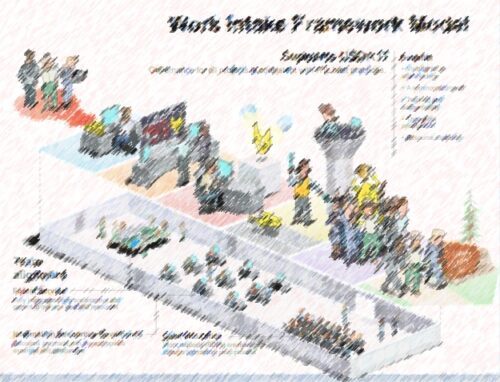
“Decide what you want, decide what you are willing to exchange for it. Establish your priorities and go to work.”
– H. L. Hunt, — American oil tycoon. February 17, 1889-November 29, 1974
Most of us cannot claim to be in the top ten list of the richest people in the United States. But we can claim to follow their practices and methods and aspire to be as successful. So, if we wish to follow Mr. Hunt’s sage wisdom, how do we decide what to work on? This question plagues all types of organizations as they labor to meet the needs of their stakeholders.
Demand Management is one method. It’s typically used to optimize investment spending, but it can be a great way to help the organization more clearly understand its priorities. I’ve outlined the key steps for successful demand management below:
Step 1: Document all requested needs
Often, a conversation may go something like this: The organization says, “I want X.” The delivery organization (or maybe those holding the purse strings) says, “X is too expensive. We are already busy working on Y. X is not as simple as it looks.” It’s a sure-fire way to drive a wedge. Try the following process instead.
- Hold a brainstorming session where the organization can freely discuss its needs independent from the CFO’s (or CIO’s) constraints.
- Document the essentials in an executive charter and capture key objective data for each need. Determine ahead of time what meta-data is needed for each request.
Step 2: Rank order the list of requests
So many times, when the organization is asked the priority of its needs, everything becomes a “high” priority. Avoid this pitfall by using a prioritization approach.
- Draft objective decision making criteria (e.g., size of initiative, duration, value-add, or other benefits). Gather all key organizational partners together. Equal representation is especially important if there are multiple stakeholders to be represented; often their priorities are quite different. It is crucial to make sure that all groups are in the same conversation.
- Set expectations that the rank order will be a consideration but by no means the rule when slotting projects for delivery. The reason for this will become apparent later in the process.
Step 3: Categorize items to indicate whether additional definition is required
At this point in the process, one may have items ranging from full-scale system overhauls (e.g., a new CRM system) to process changes (e.g., improving the prospecting approach and pipeline), to minor enhancements with existing infrastructure (e.g., update to the website). Categorize each request:
- Category 1: Ready for Estimate – There is enough information to estimate the level of effort required to implement the project.
- Category 2: Additional Definition – Requests representing new functions may require a workup of operational requirements and functional design details before being ready to estimate.
- Category 3: Strategic – The request is so complex, critical, or strategic that a project or program needs to be established specifically to address formulating the project.
Step 4: Estimate effort
Once an item is ready to be estimated one should document the level of effort required to implement. Ideally this estimate should include all phases of the initiative.
Step 5: Define additional details as appropriate
Before decision makers can consider a project, additional detail may be needed.
- Focus on the “what” in a requirements document
- Focus on the “how” in a functional design
Step 6: Schedule and launch
With prepared estimates, clear scope, and defined milestones, a project is ready to launch. Initiate the effort and leverage standard approaches for project management to monitor and control your journey.
Step 7: Continue the cycle
Utilize regularly scheduled meetings to review the request list and ensure each project is being addressed appropriately.
- As new items are defined, they should be incorporated into a backlog.
- As request are slotted to launch, change the status to a value that excludes them from future list reviews.
In the late 1970′s, H.L. Hunt’s heirs were locked in a bitter fight for control over their patriarch’s legacy. As those charged with delivering value for the organization, it is our challenge to help avoid bitter fights for control over scarce resources by following proven practices of Demand Management. These tips and tricks may not help to make you rich like an oil tycoon, but they will help you to manage a portfolio more successfully.
